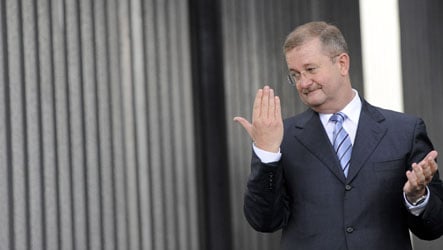But the cigar-chomping 56-year-old, one of the best paid executives in Germany, bit off more than he could chew last year when he made an audacious attempt to go for an ever bigger prize: Volkswagen.
On Thursday, with Porsche €10 billion ($14.2 billion) in the red and with VW having dramatically turned the tables, Wiedeking, an engineer by training, threw in the towel.
The pill will be sweetened for the flamboyant and snappily dressed Wiedeking, who had been sitting in the ejector seat for several weeks with newspapers baying for his blood, with a €50-million “golden parachute.”
In an attempt to stave off any public anger, however – Germany is being hit by its worst recession in decades – Wiedeking has said that half of his enormous payoff would go to charity.
He is to be replaced by production director Michael Macht, 48.
After turning Porsche around in the 1990s, Wiedeking plunged the company into one of the most serious crises in its more than 60-year history. In a bid to take over VW, Europe’s biggest car maker, Wiedeking drew up a plan that used unconventional tactics which made Porsche look at times like more like a hedge fund than a car maker.
Along with finance director Holger Härter, a seemingly talented strategist who also resigned Thursday, Wiedeking managed to increase Porsche’s VW holding to almost 51 percent at a relatively modest cost.
A series of so-called cash settlement options in VW shares earned Porsche billions as the shares climbed in value and were at one point quoted at more than €1,000 a share. That briefly made VW the world’s biggest company by market capitalisation, though on Thursday they traded for less than €250.
Up until a few months ago, Porsche was making more money with its financial transactions than it was by selling its iconic 911 sports cars and other models, as analysts tried to explain how one car maker was doing well while others were slammed by a collapse in global auto markets. But the strategy spectacularly backfired on Porsche and left it with €10 billion in debt and unable to buy the VW shares it needed to take its stake to more than 70 percent.
Wiedeking had not gambled on the arrival of the credit crunch, which sharply curtailed Porsche’s access to credit, while access to VW’s hefty cash reserves was blocked by Lower Saxony.
The state where VW is based holds a blocking minority of 20 percent of VW, something which has caused Germany problems with European competition authorities, and which Wiedeking sought to overturn.
In a desperate bid to stave off a humiliating takeover by VW, Wiedeking turned to Qatar as a potential saviour ready to invest billions in Porsche without seeking to take it over.
Porsche’s supervisory board accepted late Wednesday his proposal to hold talks with the Gulf state on taking a major stake in Porsche, along with a capital increase of at least €5 billion.
VW has offered meanwhile to buy 49 percent of the shares in Porsche’s core auto making unit, and possibly the rest later, making the once proud firm the 10th in Volkswagen’s stable of brands.



 Please whitelist us to continue reading.
Please whitelist us to continue reading.
Member comments